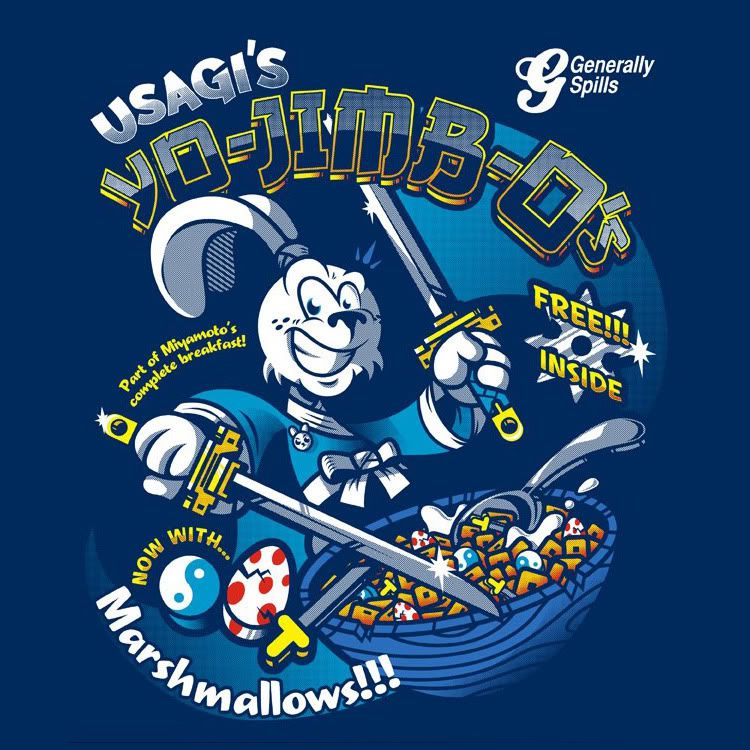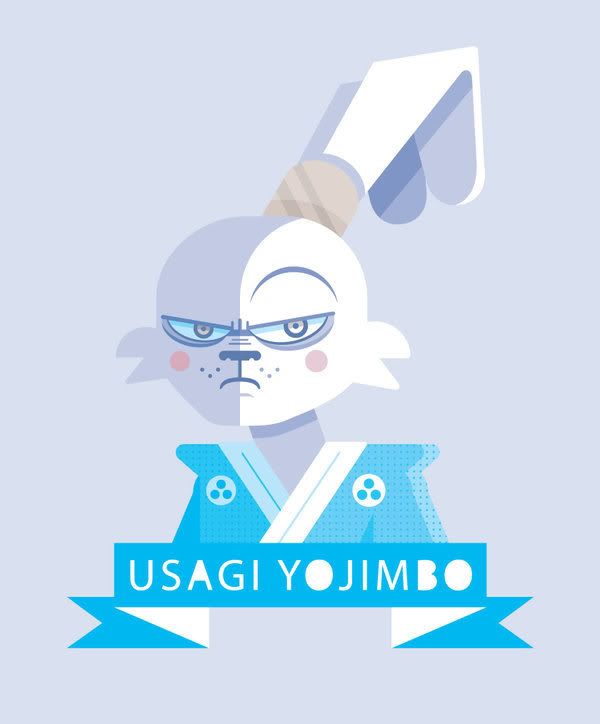
"Usagi's Yo-Jim-Bos!" by Atomic Rocket
One of the most mindblowing moments of my young life was discovering, in my local comic book store, that TMNT did not start as a brightly-colored, jovial, weekly 22-minute toy commercial, but as something much darker and more surreal. Eastman & Laird's black-and-white TMNT series for Mirage Studios was truly bizarre (I still have a handful of TMNT books kicking around, specifically issues #22, #23, and #25 - the first two books detailing a logic-defying journey through time and the latter involving a giant swamp monster named Bloodsucker.) The overt violence and irreverence of Eastman & Laird's original series (which they continued to release alongside the Bowdlerized, neutered cartoon and accompanying tie-in comic series, making me wonder how many kids were traumatized when their parents bought them issues of the more adult series by mistake) and just the sheer subversiveness of the original concept and its execution spoke to my twelve-year-old self like nothing else. A large number of major and supporting players from the cartoon first appeared in the comic in dramatically unfettered form: Casey Jones, April O'Neil, Splinter, Shredder, Baxter Stockman, Fugitoid, Leatherhead, The Rat King and others. And the topics dealt with - evolution, time travel, Japanese-American culture, vengeance, and the dark side of family - were barely even touched upon in the animated series but formed the foundation of the original comic.

"Usagi Yojimbo" by Jesús Alberto Garza López
While I have read many comics in my lifetime, those three creator-owned books have in many ways become definitive of my early experiences with the medium. TMNT was my first glimpse into the subversive potential of independently-published books, tempered by enough inherent nonsense that it was palatable to my unsophisticated tastes. Cerebus, years later, appealed to my burgeoning young-adult cynicism: while on paper the series was about a swashbuckling aardvark in a traditional, swords-and-sorcery milieu, in execution it was about a hard-drinking, foul-mouthed, pathological misanthrope dealing with increasingly complex matters of philosophy, character and faith. But Usagi Yojimbo hit me in the years between the two, and perhaps had the deepest impact, given the wry, self-aware sincerity Stan Sakai infused into his leporine hero.

"Usagi Yojimbo" by Torren Thomas
In Usagi Yojimbo, Sakai somehow managed to create a comic book series that was more effective in conveying the Edo period than any number of textbooks. And in his rabbit ronin, Miyamoto Usagi, he crafted a character that could simultaneously stand alongside the Teenage Mutant Ninja Turtles, go toe-to-toe with a pack of bandits and dismember them handily, or sit by a koi pond and recite meditative poetry. He is a practitioner of Bushidō and possesses a strict moral code; he has a hair-trigger temper, but prefers to clout interlopers with his sheathed weapon and will only draw it in the most dire of circumstances. In short, for a rabbit in a funny-book, Usagi Yojimbo was a pretty complex guy.
Usagi Yojimbo has been running for over two decades now, and has become a staple of the medium. While he's not exactly a household name, he is nevertheless highly influential: he introduced a generation of comic-reading kids to ideas and motifs that were barely touched on in other books. And the fact that it's still ongoing, after two and a half decades, is a remarkable achievement on Sakai's part. It's no wonder Usagi Yojimbo is considered one of the greats.

Simply amazing arts ;w;
ReplyDelete